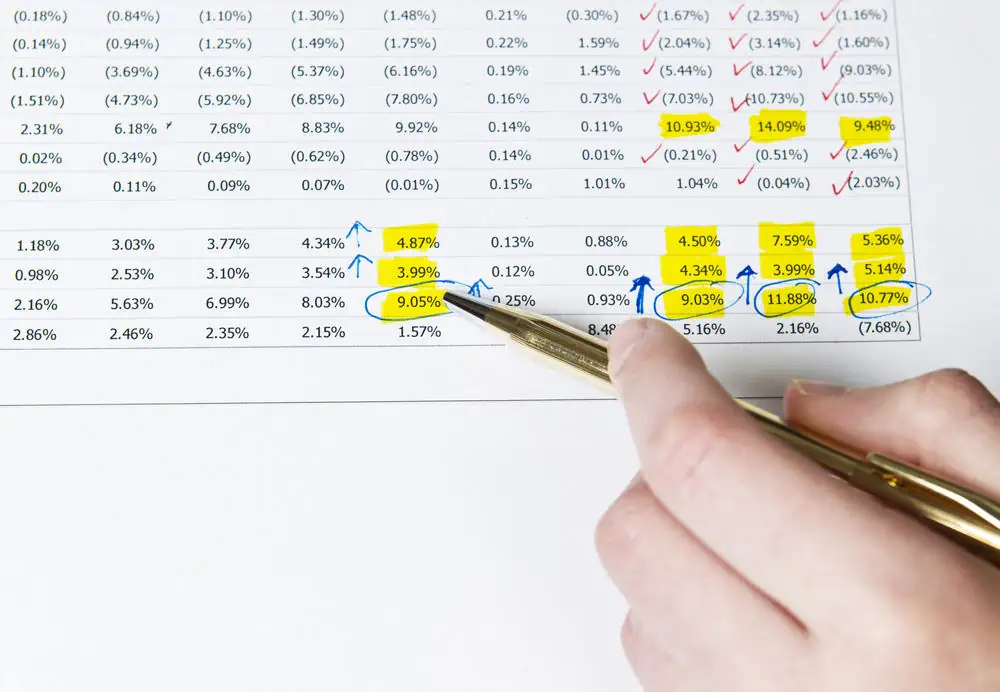Passive income is a concept that has gained popularity in recent years, as people seek ways to generate income without actively working for it. It refers to income that is earned on a regular basis with little to no effort required to maintain it. This type of income can provide financial stability and freedom, allowing individuals to pursue their passions and live life on their own terms.
Disclaimer: This information is general in nature and for informational purposes only. It is not personal financial advice and has not taken into account your personal financial position or objectives. Make sure to refer to a licensed financial or tax advisor.
One of the most popular sources of passive income is dividend stocks. Dividend stocks are shares of companies that distribute a portion of their profits to shareholders in the form of dividends. These dividends are typically paid out on a regular basis, such as quarterly or annually, and can provide a steady stream of income for investors.
Table of Contents
What Are Dividend Stocks? A Brief Overview
Dividend stocks are shares of publicly traded companies that pay out a portion of their earnings to shareholders in the form of dividends. When you invest in dividend stocks, you become a partial owner of the company and are entitled to a share of its profits.
Dividend stocks work by companies allocating a portion of their earnings to be distributed to shareholders. This allocation is typically done on a regular basis, such as quarterly or annually, and is based on the company’s profitability and financial health.
There are different types of dividend stocks, including high-yield dividend stocks, which offer a higher dividend yield but may come with higher risk, and dividend growth stocks, which may have lower initial yields but have a track record of increasing their dividends over time.
Strategies for Selecting Dividend Stocks: Tips and Tricks
Having a strategy is crucial when it comes to selecting dividend stocks. Without a clear plan in place, you may end up making impulsive decisions or investing in companies that do not align with your goals.
There are several strategies that investors can use when selecting dividend stocks. One common strategy is the dividend yield strategy, which involves selecting stocks with a high dividend yield. This strategy focuses on generating income in the form of dividends.
Another strategy is the dividend growth strategy, which involves selecting stocks that have a track record of increasing their dividends over time. This strategy focuses on generating income that grows over time.
Other strategies include the payout ratio strategy, which involves selecting stocks with a low payout ratio, and the dividend aristocrats strategy, which involves selecting stocks that have consistently increased their dividends for a certain number of years.
When selecting dividend stocks, it is important to consider factors such as the company’s financial health, its dividend history, and its future growth prospects. It is also important to diversify your portfolio by investing in different sectors and industries to reduce risk.
The Top Criteria for Picking the Best Dividend Stocks
When it comes to selecting dividend stocks, there are several criteria that investors should consider. These criteria can help investors identify companies that are likely to provide a steady stream of income and have the potential for long-term growth.
One of the top criteria for selecting dividend stocks is the dividend yield. The dividend yield is calculated by dividing the annual dividend payment by the stock price. A higher dividend yield indicates a higher return on investment in the form of dividends.
Another important criterion is the payout ratio. The payout ratio is calculated by dividing the annual dividend payment by the company’s earnings per share. A lower payout ratio indicates that the company has more room to increase its dividends in the future.
The dividend growth rate is also an important criterion to consider. This rate measures how much a company’s dividends have grown over a certain period of time. Companies with a high dividend growth rate are likely to continue increasing their dividends in the future.
Other criteria to consider include the company’s financial health, its competitive advantage, and its industry outlook. It is also important to consider factors such as the company’s management team, its corporate governance practices, and its sustainability initiatives.
The Importance of Research: How to Conduct Due Diligence on Dividend Stocks
Research is a crucial step in the process of selecting dividend stocks. It allows investors to gather information about the company, its financial health, and its future prospects. Conducting due diligence can help investors make informed decisions and reduce the risk of investing in companies that may not be suitable for their goals.
When conducting research on dividend stocks, it is important to start by analyzing the company’s financial statements. This includes reviewing the company’s income statement, balance sheet, and cash flow statement. These statements provide valuable information about the company’s profitability, liquidity, and financial stability.
It is also important to analyze the company’s dividend history. This includes reviewing the company’s dividend payments over time and assessing its ability to consistently pay dividends. Investors should look for companies that have a track record of increasing their dividends and have a sustainable dividend policy.
In addition to financial analysis, it is important to consider qualitative factors when conducting due diligence on dividend stocks. This includes researching the company’s industry, its competitive position, and its management team. Investors should also consider factors such as the company’s corporate governance practices, its sustainability initiatives, and its reputation among investors.
There are several resources available for conducting research on dividend stocks. These include financial websites, such as Yahoo Finance and Bloomberg, which provide access to financial statements and other relevant information. Investors can also use stock screeners to filter stocks based on specific criteria, such as dividend yield or payout ratio.
Understanding Dividend Yields: How to Identify High-Yielding Stocks
Dividend yield is an important metric for identifying high-yielding stocks. It is calculated by dividing the annual dividend payment by the stock price. A higher dividend yield indicates a higher return on investment in the form of dividends.
Identifying high-yielding stocks can be beneficial for investors looking to generate a steady stream of income. However, it is important to note that a high dividend yield may not always be sustainable or indicative of a company’s financial health.
When identifying high-yielding stocks, it is important to consider factors such as the company’s payout ratio and dividend growth rate. A low payout ratio indicates that the company has more room to increase its dividends in the future. A high dividend growth rate indicates that the company has a track record of increasing its dividends over time.
Investors should also consider the company’s financial health and its ability to generate consistent cash flow. Companies with strong financials are more likely to sustain their dividend payments and continue increasing their dividends in the future.
It is also important to consider the company’s industry and its competitive position. Companies operating in stable industries with strong competitive advantages are more likely to generate consistent profits and distribute dividends to shareholders.
The Best Dividend Stocks for Long-Term Investing: A Comprehensive Guide
Long-term investing in dividend stocks can provide investors with a steady stream of income and the potential for capital appreciation. It allows investors to benefit from compounding returns and take advantage of the power of time in the market.
When selecting dividend stocks for long-term investing, it is important to consider factors such as the company’s financial health, its dividend history, and its future growth prospects. Investors should look for companies that have a track record of increasing their dividends and have a sustainable dividend policy.
It is also important to consider the company’s industry and its competitive position. Companies operating in stable industries with strong competitive advantages are more likely to generate consistent profits and distribute dividends to shareholders.
Other factors to consider include the company’s management team, its corporate governance practices, and its sustainability initiatives. Companies with strong leadership, good governance practices, and a commitment to sustainability are more likely to create long-term value for shareholders.
Investors should also diversify their portfolio by investing in different sectors and industries. This can help reduce risk and provide exposure to a wide range of companies and industries.
Diversification: How to Build a Balanced Dividend Portfolio
Diversification is an important strategy when it comes to building a balanced dividend portfolio. It involves spreading investments across different sectors, industries, and asset classes to reduce risk and increase the potential for returns.
When building a dividend portfolio, it is important to consider factors such as the company’s financial health, its dividend history, and its future growth prospects. Investors should look for companies that have a track record of increasing their dividends and have a sustainable dividend policy.
It is also important to consider the company’s industry and its competitive position. Companies operating in stable industries with strong competitive advantages are more likely to generate consistent profits and distribute dividends to shareholders.
In addition to individual stock selection, investors should also consider diversifying their portfolio by investing in different sectors and industries. This can help reduce risk and provide exposure to a wide range of companies and industries.
Other strategies for diversifying a dividend portfolio include investing in different asset classes, such as bonds or real estate investment trusts (REITs), and using exchange-traded funds (ETFs) or mutual funds that provide exposure to a diversified portfolio of dividend stocks.
The Role of Market Trends and Economic Conditions in Dividend Stock Selection
Market trends and economic conditions can have a significant impact on dividend stock selection. They can influence the performance of individual stocks, sectors, and industries, as well as the overall market.
When selecting dividend stocks, it is important to consider market trends and economic conditions. This includes analyzing factors such as interest rates, inflation, GDP growth, and consumer spending patterns.
For example, during periods of economic expansion, companies may have higher earnings and be more likely to increase their dividends. Conversely, during periods of economic contraction, companies may have lower earnings and be more likely to reduce or eliminate their dividends.
It is also important to consider sector and industry trends when selecting dividend stocks. Different sectors and industries may perform differently depending on market conditions and economic factors. For example, defensive sectors such as consumer staples and utilities may be more resilient during economic downturns, while cyclical sectors such as technology and industrials may be more sensitive to economic fluctuations.
Investors should stay informed about market trends and economic conditions by reading financial news, following market indicators, and consulting with financial advisors. This can help them make informed decisions and adjust their investment strategy accordingly.
Putting Your Knowledge into Practice and Maximizing Your Passive Income Potential with Dividend Stocks
In conclusion, dividend stocks can be a valuable source of passive income for investors. They provide a steady stream of income in the form of dividends and have the potential for long-term growth.
To maximize your passive income potential with dividend stocks, it is important to have a clear strategy in place and conduct thorough research. This includes considering factors such as the company’s financial health, its dividend history, and its future growth prospects.
Diversification is also important when it comes to building a balanced dividend portfolio. By investing in different sectors, industries, and asset classes, you can reduce risk and increase the potential for returns.
Finally, it is important to stay informed about market trends and economic conditions. By staying up-to-date with the latest news and consulting with financial advisors, you can make informed decisions and adjust your investment strategy accordingly.
By putting your knowledge into practice and investing in dividend stocks, you can take control of your financial future and maximize your passive income potential. So start investing today and reap the benefits of dividend stocks for years to come.
If you’re interested in learning more about passive income and how to generate it, you might find the article “Unlocking the Power of Stock Photos Online: How Creatives Can Generate Passive Income” to be a valuable resource. This article explores the potential for generating passive income through stock photography and provides insights into how creatives can tap into this lucrative market. Check it out here.
FAQs
What are dividend stocks?
Dividend stocks are stocks that pay a portion of their earnings to shareholders in the form of dividends.
What is passive income?
Passive income is income that is earned without actively working for it. Dividend stocks can provide passive income as they pay out dividends to shareholders.
Why should I invest in dividend stocks?
Investing in dividend stocks can provide a steady stream of passive income and can also offer potential for long-term growth.
How do I pick the best dividend stocks?
To pick the best dividend stocks, you should consider factors such as the company’s financial health, dividend history, dividend yield, and growth potential.
What is dividend yield?
Dividend yield is the percentage of a company’s stock price that is paid out in dividends over the course of a year.
What is dividend growth?
Dividend growth is the rate at which a company’s dividend payments increase over time.
What is the difference between a high dividend yield and a high dividend growth rate?
A high dividend yield means that a company is paying out a high percentage of its earnings in dividends, while a high dividend growth rate means that a company is increasing its dividend payments at a high rate over time.
What are some examples of good dividend stocks?
Some examples of good dividend stocks include Coca-Cola, Johnson & Johnson, and Procter & Gamble. These companies have a long history of paying dividends and have shown consistent growth over time.







